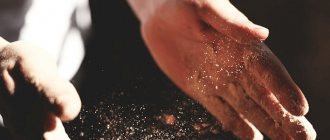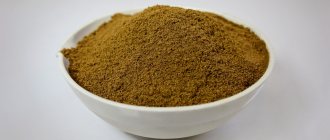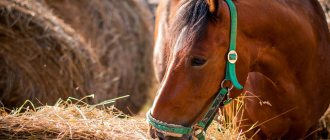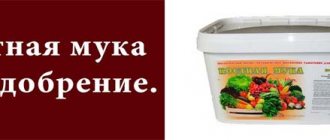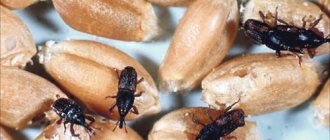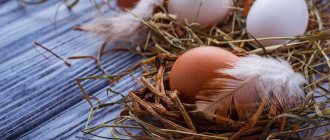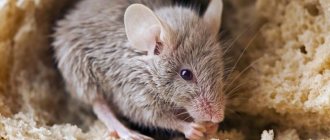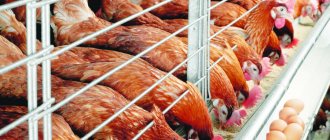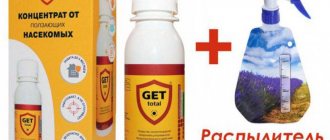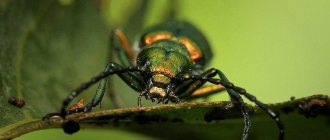Fish and shrimp meal are used in fishing as attracting additives in bait and for the manufacture of various baits: boilies, mini-boilies, bait material in the form of dough. In addition, dry fish or shrimp raw materials are used to prepare liquid attractant additives, which are obtained by extraction.
Both in dry and liquid form, these additives help make baits more catchable and bait more attractive, catching fish from long distances.
Let's look at several ways to make fish and shrimp meal at home. And also, briefly about how to make your own fish or shrimp extract from the resulting dry raw materials. As a result, we will not only receive a high-quality product that is not inferior to branded samples, but we will also be able to save money.
What is fishmeal made from?
Fishmeal is a feed product made from the soft tissues and bones of fish, as well as from waste obtained from cutting and processing seafood products. It contains a huge amount of useful microelements and vitamins.
Many gardeners and bird and animal breeders who use fishmeal on their farms are very interested in what kind of fish this product is made from. So, companies use almost any type of fish and even crustaceans for production. As a rule, local fish is used - this allows significant savings on the purchase of raw materials. But the best are considered: aloses, anchovies, sardines, pollock, herring.
There are two methods for producing the product.
- The commercial method involves the production of flour directly on sea vessels. All fish raw materials of medium and low quality (shabby, chopped, waste, etc.) are used for flour production.
Important!
The quality of fishmeal depends on the amount of crude protein in the product. For example, in top quality flour it should be at least 70%.
Fishmeal production
- Shore flour is made, as the name suggests, by shore companies. In terms of efficiency, they are more profitable and produce more flour per day, and good companies purchase only high-quality raw materials. But they also have opponents who believe that various chemicals and preservatives are added to such flour to make the product last longer.
During production, fish is boiled, pressed, dried, and crushed. In this case, drying can be steam or fire. The second option is more profitable in terms of time and price, but it has one very important drawback - during fiery processing, the fish loses many nutritional components. But steam drying is more expensive and takes longer, but the resulting product is healthier. It is also worth noting that fishmeal comes in two types - fatty (22%) and dry (10%).
Production technology
The production of fishmeal today consists of a small number of steps, which is why it is becoming increasingly popular. The production of fishmeal consists of the following steps:
- Preliminary cleaning and grinding of the main raw materials, namely fish.
- Cooking and grinding the finished product into minced meat.
- Moisture extraction and drying.
- Production of the flour itself and its packaging.
In addition, during the dehydration process, another product is obtained, namely fat, which can also be used for a variety of purposes.
Like any product, flour can be of different quality. Accordingly, the higher the protein content in the finished product, the better its quality. If we talk about GOST, then the amount of protein should be at least 50%. In order to obtain a good quality product, producers need to use only the highest grade fish. In addition to protein, flour also contains fats. It is worth remembering that the more fat the finished product contains, the shorter the shelf life of the flour.
Composition of fishmeal
Also check out these articles
- What to feed geese in winter and summer
- Palm Chamaedorea
- Carrot variety Caramel
- How to prune a pear correctly
It is thanks to the beneficial composition of fishmeal that it is so popular in agriculture. But what does it contain? Below is an approximate composition, since different companies use their own additives and even the type of fish can affect the quality of the final product.
- The main element is protein 65%;
- Fats 12-15%;
- Ash 12-15%;
- Polyunsaturated acids 8%;
- Lysine.
Interesting!
More than 5 million tons of fishmeal are produced worldwide every year!
Photo of fishmeal
The product contains a lot of vitamins (D, A, group B), minerals (phosphorus, calcium, iron), microelements, macroelements, fatty acids, amino acids (methionine, lysine, tryptophan, threonine). Finished flour contains no more than 10% water and 2% raw fiber.
Global Market Overview
Flour is produced in varying quantities by almost all countries that have sea or ocean borders. Its appearance and quality depend on the type of fauna in a particular fishing zone. For example, Chile uses horse mackerel and anchovy as raw materials, and Japan uses sardines. Peru, Mauritania, Thailand and Morocco are considered the world's largest producers.
First place in the ranking belongs to Peru. But when trying to analyze why the amount of flour products produced annually in this country (more than a million tons) exceeds the volume of live fish caught, a number of questions arise about the use of chemical additives. In second place is Mauritania, which, when processing various varieties of fish, achieves a protein content of 62 to 67%.
Fishmeal is produced in all countries where there is access to the sea or ocean
Imported flour is expensive, so Russian farmers are increasingly inclined to purchase products from domestic producers. Its price is lower, and its quality is practically not inferior to its Chilean and Peruvian counterparts.
Where is fishmeal used?
Fishmeal is very useful if it is of high quality and not spoiled. It is used:
- as a fertilizer (due to the abundance of phosphorus) for the land and various crops (tomatoes, eggplants, potatoes, peppers);
- as a vitamin supplement for birds;
- for pigs;
- as a food for pets;
- for cattle.
As you can see, fishmeal is a fairly common product in agriculture. But in order for it to bring maximum benefit, when buying flour you should pay attention to the manufacturer, the type of manufacture of the product and the packaging itself. It must be complete, with all the necessary information.
Advantages and disadvantages
Fishmeal has almost the same effect on plant development and productivity as complex mineral fertilizers. But due to the lower content of nutrients, it is less pronounced. Unlike synthetic fertilizers, it has a long aftereffect of up to 2-3 years after application.
What does the use of fertilizer provide:
- Increasing soil fertility . Once added to the soil, organic matter is processed by soil microorganisms, resulting in the formation of humus. Garden soil becomes loose, allows air to pass through well, and absorbs water and nutrients.
- Increased productivity . By feeding plants with phosphorus, nitrogen and other minerals, plant germination and development are accelerated, and fruits are actively produced in larger quantities. Vegetables, fruits and berries are rich in sugars and vitamins.
- Strengthening plant immunity . Garden crops are more resistant to various infections, drought, and cold weather.
- Safety . Mineralization of organic matter occurs gradually. There is no risk of transferring fertilizer and causing plant poisoning. Nitrates do not accumulate in fruits. The substance is harmless to humans and pets.
- Convenience and accessibility . The product is inexpensive, does not take up much storage space, and is easy to use.
Fertilizers also have disadvantages. Any organic matter cannot fully meet the needs of garden crops for essential nutrients. Modern plant varieties are highly productive and therefore require large amounts of quickly absorbed forms of nitrogen, phosphorus, and potassium during the growing season.
Using fishmeal, it is impossible to cure plants depleted due to lack of nutrition. Only chemical fertilizers with fast and strong action can cope with this task.
Fishmeal as fertilizer for the garden
We recommend reading our other articles
- The best varieties of white grapes
- Potato Gala
- Compote of plums and apples
- Potato variety Zhukovsky
Fishmeal as a fertilizer is in great demand. Depending on what it is to be used for, the method and concentration may differ.
- To enrich the soil, after harvesting in the fall, flour is simply scattered over the area (100-150 g/m2), and then the ground is dug up.
- Apple trees, plum trees, and pears are fed with fishmeal once every 3 years. Up to 200 g of fertilizer is poured under the tree trunk and mixed with soil (the top layer of soil is simply loosened), and then watering is carried out.
Interesting!
Only if the soil lacks phosphorus can fishmeal be used as a fertilizer for the vegetable garden. If there is already a lot of phosphorus in the soil or just enough, the use of fishmeal can be harmful.
- Any berry bushes are fed with dry fertilizer. Take 100 g of fish powder per square of plantings. If the bush is replanted or a new one is planted, you can pour fertilizer into the planting hole. One plant needs 50 g.
- When feeding a tomato, an average of 30 g of flour is placed in each hole for planting seedlings.
- To fertilize potatoes, you just need to sprinkle the product on the ground, next to the bushes. Up to 100 g is taken per square meter of area.
- Flowers and bulbous plants are fertilized with fishmeal only once - in the spring, using 50 g per square meter.
Compost enrichment
Most compost consists of plant debris that is placed in a bin, hole, or just a pile. Any organic substances are added to them: manure, garden soil, kitchen waste, sawdust, straw shavings, etc.
Finished compost often lacks phosphorus. To make it a universal fertilizer, fishmeal is added to it. The powder increases the content of macro- and microelements in it, accelerates the decomposition of plant residues.
To distribute the composition evenly, the compost is laid in layers 20-25 cm thick. Each layer is sprinkled with powder. Then they spill it with water.
Fishmeal as chicken feed
For chickens, fishmeal is one of the most important sources of nutrients, so it cannot be excluded from the bird’s diet. It is given to both adults and young individuals, as well as chicks.
Important!
Fishmeal is a valuable feed not only for chickens, but also for any other poultry.
Fishmeal as part of a laying hen’s diet improves her metabolism, allows her to lay more eggs, increases their nutritional value and improves their taste. However, it is important to maintain a balance. Fishmeal is only a small part of the daily diet. One bird should consume no more than a teaspoon of product per day!
Photo of packaged fishmeal
Press-drying method
In this case, the raw materials are fed through a conveyor into a special loading hopper, and then into the cooking container. After hot processing, it enters a screw press to remove moisture. The remaining mass after squeezing is dried and crushed.
One of the modifications of this method is centrifuge drying. In this case, after cooking, the fish does not go under a press, but into a special centrifuge.
The broth remaining after processing the raw materials using all these methods is used to prepare another very useful product - fish oil. It is also very often added to animal feed. It is extremely useful, for example, for ducklings and chickens. By receiving fish oil, young poultry get sick much less, and lunging is also reduced. This product, just like flour, is mixed into poultry feed. Experienced farmers recommend diluting it with water in a 1:2 ratio beforehand.
Fishmeal for broilers
The reason why breeders always include fishmeal in the diet of broilers is profit. Yes, you have to spend money on buying fishmeal, but these costs fully pay for themselves, even if you buy high-quality flour.
Important!
To prevent the quality of meat from being affected, 2 weeks before slaughter the amount of bone meal in the broiler diet is reduced to a minimum (2 g/day or less). If this is not done, the meat will have a pronounced, unpleasant aftertaste.
By consuming fishmeal with feed, broilers grow very quickly, and they rapidly build up muscle mass. The digestion process is normalized and the risk of obesity is reduced. It is also believed that birds that regularly ate this additive in small quantities have softer, juicier and tastier meat than chickens that do not consume it, or consume it but not often.
Fishmeal for chickens
If you regularly give fishmeal to chicks, you can significantly increase their productive qualities and characteristics. What does this mean?
- The chicks begin to grow and develop faster, which means that the reproductive age of the grown bird will come a little earlier.
- The immunity of birds increases and due to this the survival rate of young animals increases significantly.
- Chickens begin to gain muscle mass much faster and, as a result, reach slaughter weight faster.
In order not to overfeed chickens with this additive, up to 2 g of flour mixed with feed per head should be given per day.
Cooking of raw materials
Boiling fish is only necessary when you want to make low-fat fishmeal. Lean fish does not need to be cooked. It will retain more essential amino acids, vitamins, and microelements.
Cooking process:
- Water is poured into a container of the required size, salted and brought to a boil;
- Large fish, cut into pieces, and small fish whole, are dropped into boiling water, and after boiling again, cook for 3-5 minutes.
Fishmeal as animal feed
Fishmeal is fed not only to chickens and other types of poultry, but also to pigs, cows, and pets.
- When using this supplement, pigs grow faster and gain weight, the immune system is activated, females produce more offspring and milk for feeding, metabolism improves, meat and lard acquire a delicate taste. Adult pigs are given 2-4% of flour per day from the total weight of feed, and piglets - 5-15%.
- When fishmeal is consumed by cattle, the productivity of animals can be significantly increased and their quality of life can be improved. This supplement can significantly increase the birth rate and immunity of animals (including calves), accelerate growth and weight gain, females produce more milk, and its taste becomes better, as does the taste of meat in meat species. Animals that include fishmeal in their diet get sick less and have fewer abnormalities. Cattle are given flour throughout their life. For adults – 1-3%, for young animals – 3-7% of the feed weight.
Important!
To get tasty pork or beef, you need to reduce the amount of fishmeal in the animal’s diet to a minimum 2 months before slaughter.
- For domestic animals - dogs, cats, fish meal, as it turned out, is also useful, but it is given mainly to those animals that eat simple food, and not store-bought food. But this does not mean that pets who eat ready-made food do not eat fishmeal at all. It is usually added by manufacturers during feed production. For dogs and cats, this vitamin supplement improves coat quality, strengthens bones and muscles, and improves immunity.
Areas of use
The most common uses of bone meal are :
- on poultry farms;
- in livestock farms;
- as a fertilizer.
Use as feed for farm animals
Flour is used to balance feed mixtures for animals, birds, and fish. Adding to the diet is recommended in small portions. The following criteria must be taken into account. So, for rabbits no more than 2% of bone meal in the general diet is permissible, for feeding pigs - about 5%. It is recommended to add powder to birds, the amount of which does not exceed 7% of the total feed ration, and to fish - up to 20%. These general standards need to be further adjusted taking into account the amount of other feed components.
Bone meal should not be mixed with other feeds; it is better to give it separately, which promotes its uniform consumption by animals and reduces losses.
Use as dog food
An adult dog receiving balanced natural food , as a rule, does not need to add bone meal to its diet. But during pregnancy and during feeding, she needs an increased amount of minerals and vitamins, as well as during the formation and growth of the osteoarticular system of a young dog. Bone meal contains the substance ossein, which promotes rapid fusion and healing of fractures .
It is not recommended to feed small puppies and miniature dog breeds bones at all, which can lead to phosphorus and calcium deficiency in the dog's body. Adding bone meal can compensate for this deficiency, as well as the lack of vitamins such as A and D3.
The following rates of use of the product for dogs are recommended (per 10 kg of live weight):
- for puppies the daily norm is 23 g;
- for adults – 10 g;
- for females in the first half of pregnancy it is recommended to increase flour consumption by 10%, in the second half - by 20%;
- during lactation, in the first weeks of feeding, the consumption rate increases by 50%, subsequently by 70%.
One teaspoon contains 5 g of bone meal.
Use as fertilizer
Bone meal has also found its use as a natural fertilizer Flour for fertilizers is made from dead animals unfit for consumption, fish and meat and bone waste. This fertilizer is mainly applied to acidic soils due to its high calcium content.
- mix flour with humus;
- place on beds or furrows;
- plant plants.
Storage Features
Fishmeal is only beneficial when it is fresh and of high quality, so you need to know how to store it correctly if such an additive is often used for animals, birds, or just in the garden. Research has shown that fishmeal deteriorates quickly with any type of storage.
- If the humidity is normal and the temperature is about +20 degrees, in just one month the amount of protein and crude protein will decrease by 12%.
Important!
At high humidity and temperature, ammonia begins to accumulate in the product, and it becomes unfit for consumption.
- If you store the product at sub-zero temperatures and normal humidity, the quality of flour will decrease and the amount of crude fat will decrease by 40%.
- High humidity will reduce the amount of vitamins and minerals.
Minimal quality losses can be achieved by storing in a dark room with sub-zero temperatures and humidity below 10%.
Production methods
For the production of fishmeal, regardless of the brand and price of equipment, the following technological methods :
- direct drying;
- press-drying;
- press-drying combined with chemical additives;
- extraction centrifuge-drying;
- vacuum-low temperature drying.
The choice of method mainly depends on the lipid content of the feedstock, which is divided according to this indicator into groups:
- Lean raw materials contain at least 5% lipids. The main processing method is direct drying.
- Raw materials of medium fat content contain from 5 to 10% lipids.
- In fat – more than 10%.
fatty and medium-fat raw materials by all means , excluding direct drying. In practice, especially when producing fishmeal directly on ships during fishing, all incoming raw materials are processed by direct drying.
Direct drying
The process involves the following operations:
- raw materials are supplied to drying and cooking drums;
- the drums are heated to a temperature of 90-100 degrees;
- raw materials are cooked for 20 to 27 minutes;
- steam is supplied to the drums under pressure;
- heating and boiling in steam lasts up to 5 hours;
- When the humidity reaches 10-12%, the mass is removed, crushed, cooled and packaged.
With standard drying parameters, flour is formed at the output in an amount of 24% of the original mass, and there is practically no loss .
The advantages of this method include:
- low energy consumption of equipment;
- high product yield;
- ease of maintenance;
- small installation sizes.
The disadvantages include the relatively short shelf life of flour and the inability to obtain a high-quality product with a fat content of more than 5%.
The quality of the finished product increases when the method is used in vacuum installations with a vacuum at a heating temperature of up to 80 degrees.
Press-drying method
Allows the use of raw materials with high fat content:
- the cooking mode is adjusted according to the type of raw material used;
- moisture is partially removed from the boiled raw cheese using a press;
- The pulp is dried from 55% water content to 8-10% moisture content;
- fat from under the press is separated;
- the broth is evaporated.
The advantages of the method include simple equipment and wide possibilities for its modification.
By the end of the last century, the method proved its economic feasibility in very difficult economic conditions. Modern installations are units with maximum automation included in continuous lines available for operation.
Extraction
The method involves extracting lipids directly during drying or from finished flour.
As a rule, coastal enterprises use a combination of press-drying production followed by solvent extraction.
They bring flour made at sea to the desired condition. As a result, the concentration of fats in flour is brought to 1%.
Centrifuge dryer
In this technological option, pressing is replaced by centrifugal force created by a decanter.
After cooking, the raw material is pumped into a centrifuge. In it, the product is divided into pulp and broth.
The broth is processed using a press-drying method, and the dense fraction is dried. Flour yield is from 15 to 19%.
Precipitation centrifuges are usually imported. They are used on ships for processing raw materials of any fat content.
Flaws:
- long-term boiling of raw materials is necessary;
- drying time increases at high temperatures;
- the flour yield does not exceed 16%.
The advantages include the fat content - with this method there is one third less fat in the flour than with the press-drying processing option.
Combined method
, surfactants are introduced into the raw materials during boiling . This promotes the transition of lipids into the liquid phase. As a result, the fat yield increases and the pulp dries better.
The advantages of the method include a high yield of fish oil up to 50% and the stability of the flour during storage.
LT technology
This processing method is applicable only for absolutely fresh raw materials:
- LT technology is used for processing on ships no later than 3 hours after catch;
- raw materials are processed in vacuum installations;
- processing temperature – up to 70 degrees;
- technology prevents the destruction of vitamins and lipid oxidation.
With this technology, the properties of raw materials are preserved as much as possible, and feed is obtained of high quality and with a long shelf life. The production of flour using LT technology has not yet been mastered in Russia.
